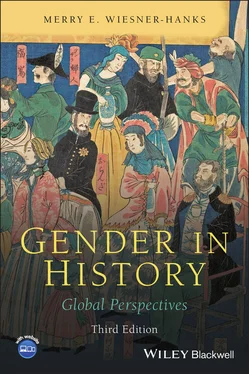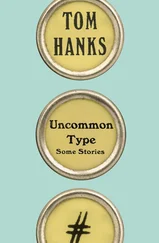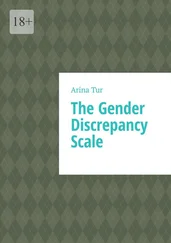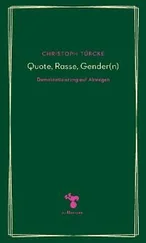In some parts of the world, such as several indigenous North American groups, a stress on the complementarity of the sexes led to fairly egalitarian economic and social arrangements. Similarly, at some points in pre-Columbian Mayan history, ideas about gender complementarity appear to have led to power and privileges being inherited bilaterally. In Europe, however, the spread of the Galenic model after 1600 led instead to the idea that gender differences pervaded every aspect of human experience, biological, intellectual, and moral. This occurred at the same time that physicians and scientists began exploring the reasons for differences among humans, and, not surprisingly, shaped the results of their experiments and measurements. Male brains were discovered to be larger than female, male bones to be stronger. When it was pointed out that female brains were actually larger in proportion to body size, female brains were determined to be more child-like, for children’s brains are proportionately larger still. In the nineteenth century, new fields of knowledge such as psychology and anthropology often gave professionals and officials new languages to describe and discuss gender distinctions. They located gender differences much more clearly in the body than had earlier thinkers, for whom the differences between men and women derived primarily from their social role or place in a divinely created order.
Ideas about gender differences based in the body were interwoven with those about racial differences as European countries developed colonial empires: white women were viewed as most likely to incorporate female qualities viewed as positive, such as piety and purity, while nonwhite (especially Black) women were seen as incorporating negative female traits, such as disobedience and sensuality. White men, in this view, were more rational because of their sex and their race, while nonwhite men were more likely to demonstrate negative or ambiguous male qualities such as anger or physical prowess. The relations between gender and racial – and also class – hierarchies were worrisome, however. It was clear to most Europeans who stood at the top of the hierarchy – white men – and who at the bottom – nonwhite women – but the middle was more ambiguous. Were hierarchies of race easier to overcome than those based on gender, that is, was it easier for a woman to be “manly” or for a nonwhite man? If social class could outweigh gender as a determinant of social role for a woman like Queen Elizabeth I of England, could gender outweigh race for a man like Shakespeare’s Othello?
To address such questions, by the eighteenth century medical and scientific measurements were applied to ethnic and racial differences as well as those of gender, and it was “proven” that various groups had smaller brains or other markers of inferiority. Émile Durkheim (1858–1917), often referred to as the “father of sociology,” linked racial and gender measurements by noting that “although the average cranium of Parisian men ranks among the greatest known crania, the average of Parisian women ranks among the smallest observed, even below the crania of the Chinese, and hardly above those of the women of New Caledonia.” Such dichotomous crania were, in Durkheim’s view, a sign of French superiority, for they marked the greatest gender distinctions. Debates about gender, race, and class differences continued well into the twentieth century, with arguments for both inequality and equality couched in scientific language and the body used as evidence.
Science was used in many eras to make discussions of the nature of men and women appear objective and irrefutable, but it is clear that basic ideas about gender were influenced by political factors. For example, elite masculinity became more closely linked to war in Japan during the Tokugawa period (1603–1867) because of the civil wars that immediately preceded this era; those civil wars made a “code of the warrior” the ideal for upper-class men, in which dying for one’s leader was highly praised. These links to politics may shape something as basic as the words one uses. In China, for example, the words used for female persons in the twentieth century had political implications and purposes. The most common word in imperial China was funü , which originally implied “female family member” and linked women with their kin groups. In the 1920s, Chinese middle-class intellectuals adopted the word nuxing to signify a more “modern” type of woman, more sexualized and commercial and less linked to her family. In their rejection of middle-class values, the Communists went back to funü , but reinterpreted it to link women with the state rather than the family. In the post-Mao period, some writers have gone back to nuxing to downplay the association between women and the state, and others have adopted nuren , a word influenced by social science terminology that downplays the link with both family and state. There is thus no word for female person in Chinese that does not have some political and social implications.
Many scholars have noted similar situations, though perhaps less dramatic, in other cultures and languages, noting that when people use the word “woman” or “women” categorically in descriptions and generalizations (“women are . . .”) they are only rarely really thinking about all women. They often cite the words ascribed to the African-American ex-slave and abolitionist Sojourner Truth (ca. 1797–1883), who is reported to have responded at a women’s rights convention to the notion that women were too weak to vote by pointing out the hard physical labor she had carried out throughout her life and asking “Ar’n’t I a woman?” The historian Nell Irvin Painter has demonstrated that though Truth did make many speeches and published pamphlets in favor of women’s rights and abolition, this phrase was added in a later account of her speech by the woman chairing the convention. The phrase is so effective at highlighting ways in which the category and even the word “woman” are socially constructed and linked to power relationships, however, that it is hard to stop using it.
“Man” and even “person” are similarly variable, particularly when used in formal legal documents. Jurists in sixteenth-century Europe debated whether the laws regarding homicide applied equally to men and women, leading one to remark that “a woman, categorically speaking, is not a human being.” Laws extending voting rights to broader groups of men in the nineteenth century began to add the word “male” for the first time because women had attempted to interpret the existing word “person” to include women and to vote as long as they had the required amount of property.
Though we can recognize the historical and social nature of the categories “woman” and “man,” and increasingly view gender as a continuum, for most of the world’s cultures woman/man is a fundamental binary and often linked with other dichotomous conceptualizations. Some linguistic and sociological theorists argue, in fact, that gender opposition is the root of the very common tendency to divide things into binary oppositions, viewing this almost as “natural” because it is found in so many cultures. In some cases, these conceptualizations are complementary, with “male” and “female” categories regarded as equally important; in others, the categories are clearly hierarchical, with “male” categories always valued more highly than “female.” In others, the categories may vary in their asymmetry, or not be completely dichotomous. Yin and yang are an example of the latter, for yin is understood to contain some yang, and vice versa.
Cultures vary in the sharpness of their dichotomies, with the categories sometimes sharply divided and sometimes interpenetrable. Some scholars see Western binaries as more dichotomous than those in non-Western cultures, though anthropologists point out that sharp social binaries based on kin group – which they term moieties – were also widely present in indigenous South America and Oceania. Cultures also vary in the degree to which differences are enforced; in some areas male/female distinctions are quite loose, while in others men or women risk severe punishment or death simply by being present in a space assigned to the other sex. People, especially women, may vary in their association with certain categories throughout the life-cycle: postmenopausal women sometimes come to be associated with conceptual categories and work or ritual activities usually viewed as “male,” and very old people with qualities usually regarded as “female,” such as dependence.
Читать дальше












